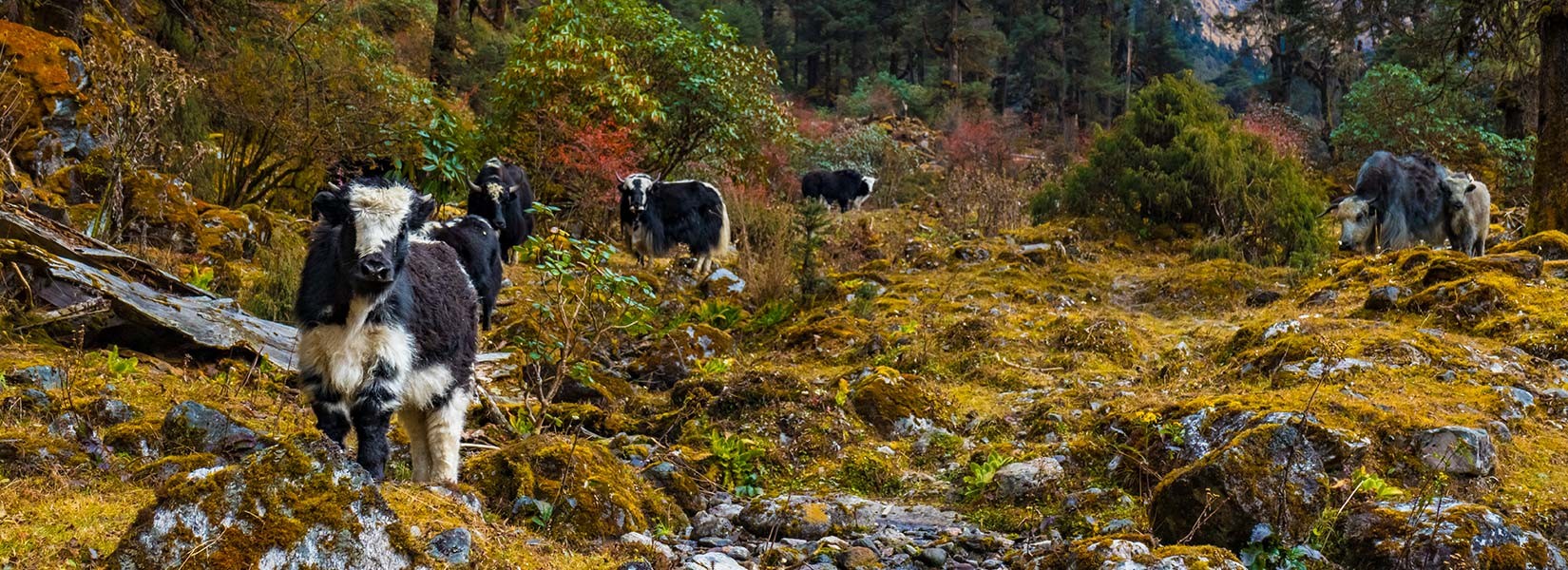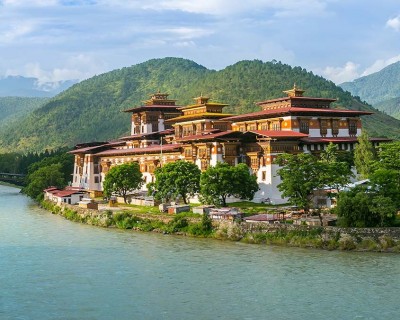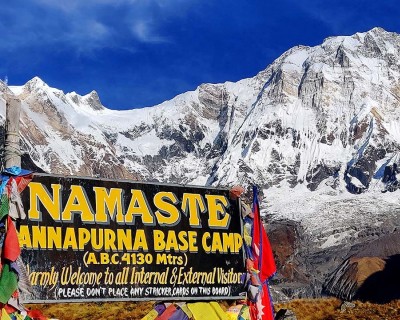Geographic and Climatic Overview
Kanchenjunga region is one of the major and protected areas in the Nepali Himalayas that was established in 1997. This majestic Himalayan region borders with the Qomolangma National Nature Preserve in Tibet to the north and Khangchendzonga National Park in Sikkim to the east.
On the western side, this region borders with the Sankhuwasabha District and is about 125 km (78 miles) southeast of the Everest region. Kanchenjunga region ranges from the elevation of 1,200 to 8,586 meters (3,937 to 28,169ft).
The elevation point in this region stretched from the low valley to the summit of the third highest peak in the world. Thanks to this vertical range, there is a wide diversity of ecosystems in the region. From the tropical forest to the alpine tundra region, the flora and fauna thrive in their natural habitats.
Climatic conditions in this Himalayan region vary significantly at different altitudes. There is a warm subtropical temperature at the lowland, mild temperate climate in the mid-section and cold alpine temperatures at the higher part of the region.
This variety of landscape and climate fosters a wide array of habitats that support the diverse range of flora and fauna. That’s why Kanchenjunga is one of the most ecologically diverse regions across the world.
Don’t Forget:18 Days Kanchenjunga Trek
20 Days Kanchenjunga Circuit Trek
Flora of the Kanchenjunga Region
The flora inside the Kanchenjunga region is categorized by different vegetation zones. In both tropical (below 1,000m) and sub-tropical (below 2,000m) regions, the vegetation is dominated by broadleaf flora.
You will find lush forests of bamboo, rhododendron, oaks, mongolia, etc in these climatic zones. After you ascend to the higher altitudes, at the temperate zone (below 3,000m), the vegetation transitions to the mixed coniferous trees. Pine, fir, hemlock, etc, are dominant in this region as treeline slowly starts to fade away.
Even upto the subalpine zone (below 4,000m), you will find various species of rhododendron bushes, coniferous species and mixed forest of broadleafs. Mostly, the trees and plants found in this climate have adapted to withstand the cold weather and snow.
So, they have needle-like leaves and thick barks for frost resistance and terrain moisture. As you cross this region, you walk over the treeline. At the alpine zone (below 5,000m), there are only shrubs and bushes.
Juniper shrubs, dwarf rhododendrons, berberis, medical herbs and alpine meadows are common forms of vegetation at this alpine altitude. Beyond this, at the tundra zone (above 5,000m), it is hard for the vegetation to survive due to the extremely harsh climatic conditions.
Thus, at these altitudes, only a few species of vegetation, such as lichens, mosses, cushion plants, etc, can be found. The vegetation at this altitude has to survive the extreme cold climate, dry environment and intense ultraviolet radiation.
Notable Flora of Kanchenjunga Region: Rhododendron, Oak, Hemlock, Maple, Juniper, Larch, Mountain Ash, Silver Fir, Swertia Chirayita, Ophiocordyceps Sinensis (Yarsagumba), Nardostachys Jatamansi (Jatamansi), etc.
You May Also Like:A Day in the Life on the Kanchenjunga Trek: What to Expect on the Trail?
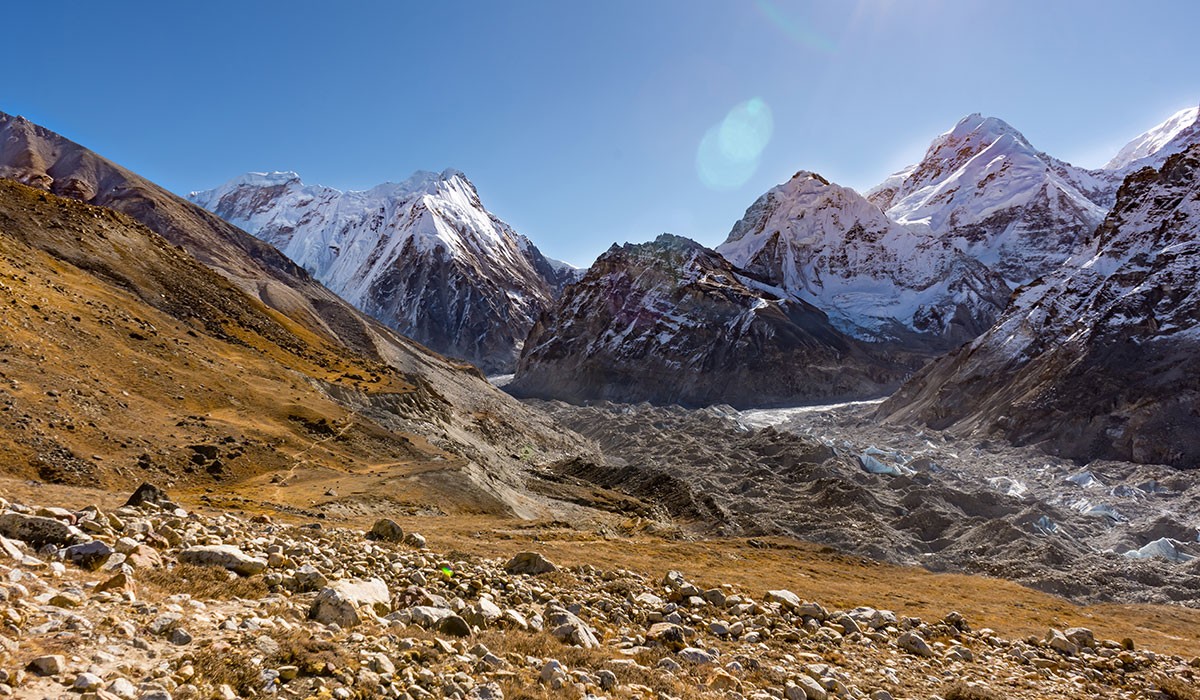
Fauna of the Kanchenjunga Region
Mammals
Like the flora, the Kanchenjunga region is also rich in mammalian diversity. There are over 22 species of mammals in this region including some of the most unique and endangered high-altitude species in the world.
The mammals in this Himalayan region have adapted to their specific habitats and reflect the biodiversity that thrives with the varied altitudes inside Kanchenjunga. Elusive predator snow leopard roams at high alpine altitudes and its prey, blue sheep and bharal can also be found at similar altitudes.
In the lower part of the region, red pandas, wild dogs, sloth bears, black bears, etc can be found. Mostly, only thick fur animals that can adapt to the cold climate are found at the higher altitudes. However, these mammals also highly trespass to different climatic zones and can be found at different altitudes except the lower altitude animals.
Notable Mammals of Kanchenjunga Region: Himalayan Tahr, Musk Deer, Wild Dog, Sloth Bear, Snow Leopard, Himalayan Black Bear, etc
Birds and Insects
In the Kanchenjunga region, 252 species of birds and 82 species of insects have been recorded. Due to its rich diversity of both birds and insects, this region attracts a huge number of birdwatchers, ornithologists and entomologists from all around the world.
The national bird of Sikkim, the blood pheasant, is found in this region. Different prey species of birds, like eagles, lammergeiers, etc, patrol the skies and can thrive even at higher altitudes. As for the lower regions, small species of birds that prefer warmth, insects and worms thrive here.
Notable Birds of Kanchenjunga Region: Bloode Phesant, Crossbill, Allied Warbler, Golden Breasted Tit Babbler, Kalij Pheasant, Snow Pigeon, Tibetan Snowcock, Steppe Eagle, Golden Eagle, Eurasian Kestral, etc.
Fish and Amphibians
Due to extreme altitude and cold climatic conditions, the species of both fish and amphibians are limited in the Kanchenjunga region. There are recorded 5 species of fish and 6 species of amphibians in this high-altitude protected region.
As the high-altitude environment is not convenient for the species of fish and amphibians, they mostly thrive in the lower regions. The Himalayan salamander is one of the notable amphibians found in this region that inhabits damp environments.
Similarly, in the warmer low valleys, several varieties of species of lizards and snakes can be found. This unique diversity contributed to the ecological compatibility of the region to maintain a balanced chain.
Find Out More About: Kanchenjunga vs. Everest Base Camp Trek: Which is Right for You?
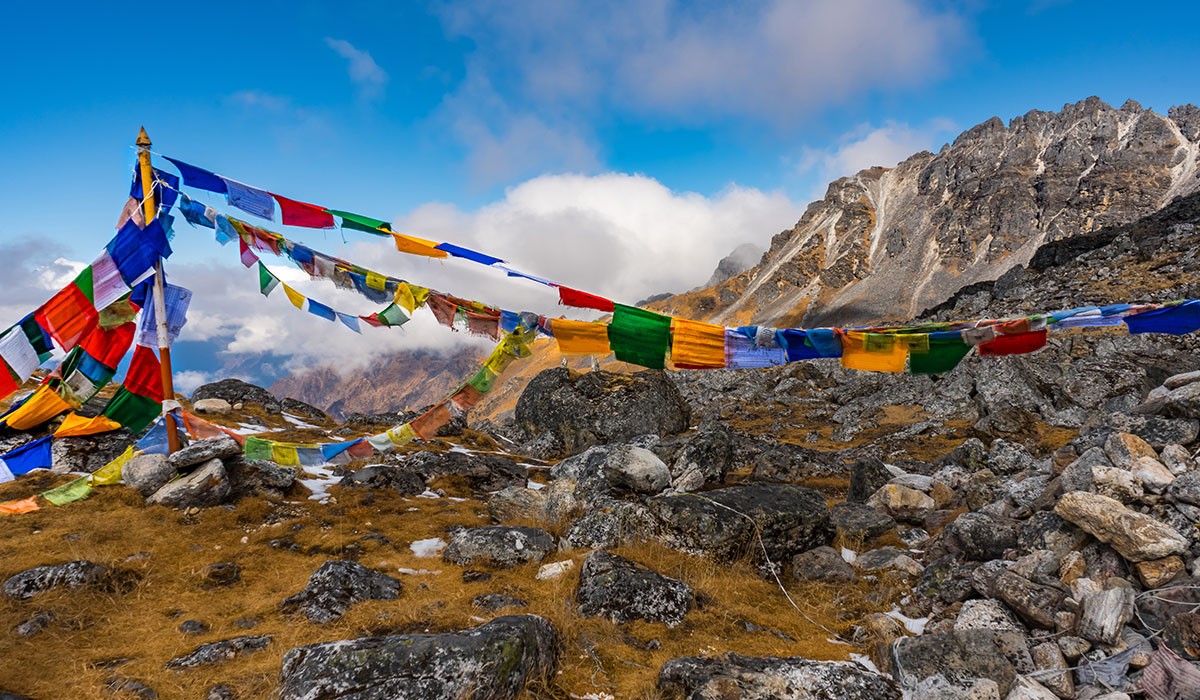
Conservation Efforts
Kanchenjunga Conservation Area, which is named after the third-highest peak in the world was established to protect the rich biodiversity of the region. This conservation area, which was established in 1997, is the third conservation area in the country and covers an area of 2,035 sq. km.
Nepal Government’s initiative to protect the diversity of the region in collaboration with the locals and international conservation organizations plays a significant role in protecting the flora and fauna of the region.
The Kanchenjunga Conservation Area aims to safeguard both the natural and cultural aspects of the region by involving the local communities in conservation initiatives. Managing tourism activities in the region, reforestation and monitoring the endangered species of flora and fauna is the primary initiative of the conservation cause.
Furthermore, this conservation effort also focuses on the education of the locals. The Kanchenjunga Conservation Area organizes educational materials and oversees the training of the local organization to help them learn about the conservation area and utilize the available resources to help the cause.
Threats to Biodiversity
Despite its isolation from the modern world and fewer tourism activities, the Kanchenjunga region still faces several threats to biodiversity. There are numerous factors that threaten the ecosystem of the region and the survival of its unique species.
These threats to the biodiversity of the Kanchenjunga region are primarily driven by the chain effect of natural environmental changes and human activities. For instance, climate change is one of the pressing threats to the flora and fauna of the region.
The rise in temperatures is altering the natural habitats of the species. Species of animals that prefer cold climates have to move even higher. Furthermore, the change in temperature and precipitation patterns is also affecting the life cycle of plants and animals, migration patterns and availability of food.
Similarly, due to human activities such as deforestation and agricultural expansion. This habitat loss and fragmentation make the animals and plants vulnerable. On the other hand, the illegal wildlife trade and poaching pose serious threats to the endangered species in the region.
Furthermore, beyond those aspects, the overgrazing of livestock, human-wildlife conflict, invasive species and unsustainable tourism practices do pose a threat to the biodiversity of the Kanchenjunga region.
Also Read: Solo Vs. Guided: The Best Way to Experience the Kanchenjunga Trek
Importance of Biodiversity in Kanchenjunga Region
The biodiversity of the Kanchenjunga region not only plays a crucial role in the ecosystem of the region but also in the cultural, economic and social well-being of the communities as well. This interconnection of the species and their habitats with the human settlements contributes to the stability of the environment, food chain and cultural traditions.
Each species of the Kanchenjunga region has a unique role in the ecosystem. They contribute to nutrient cycling, pollination, soil formation, water purification or in some other way to ensure no single species overdominates.
Besides providing food security for the local communities, the conservation initiative also improves the economic conditions and livelihoods of the locals. As the Himalayan region is a hub for medicinal resources, sustainable harvesting practices bring prospering economic opportunities. The same contribution is also made by sustainable tourism practices.
Moreover, this region also has great cultural and spiritual significance. The biodiversity of the region holds deep importance among the local communities in both of these aspects. Some of the plant species available in the region are used for cultural practices.
Likewise, the rare species of wildlife hold sacred and mythical status among the local communities. So, for the settlements in the region, protecting biodiversity is not just about the ecological concern but also a way to preserve the cultural and spiritual essence of the region that has been passed down from generation to generation.
Sustainable Tourism and Eco-Friendly Practices
The trekking routes in the Kanchenjunga region pass across lush forested trails, terraced farms, alpine meadows and beautiful villages. Thus, promoting responsible tourism practices is crucial to reduce the impact of tourism on the communities and environment.
There are several ways to promote suitable tourism and eco-friendly practices that directly make an impact on the conservation of the flora and fauna of the Kanchenjunga Region. For instance Community Base Tourism (CBT) is one of the most impactful approaches that benefits the socio-economic conditions of the locals as well. Tourism can have a positive impact on the local economy if done sustainably.
Another initiative that contributes significantly to the conservation of the region is waste management and pollution control. The plastic reduction approach, zero waste initiatives and organic composting go a long way to maintain and sustain eco-friendly tourism practises in the region.
Thats why environmental awareness and education are important among the guides, tourists and locals to help the cause. The national and local authorities initiative providing educational materials, training guides on eco-friendly practices and running workshops raises awareness at different levels.
Sustainable tourism and eco-friendly practices are vital to preserving the beautiful environment and unique culture of the Kanchenjunga region. The promotion of responsible tourism, eco friendly approaches and waste management can attract visitors and also minimize the negative impacts of tourism.


